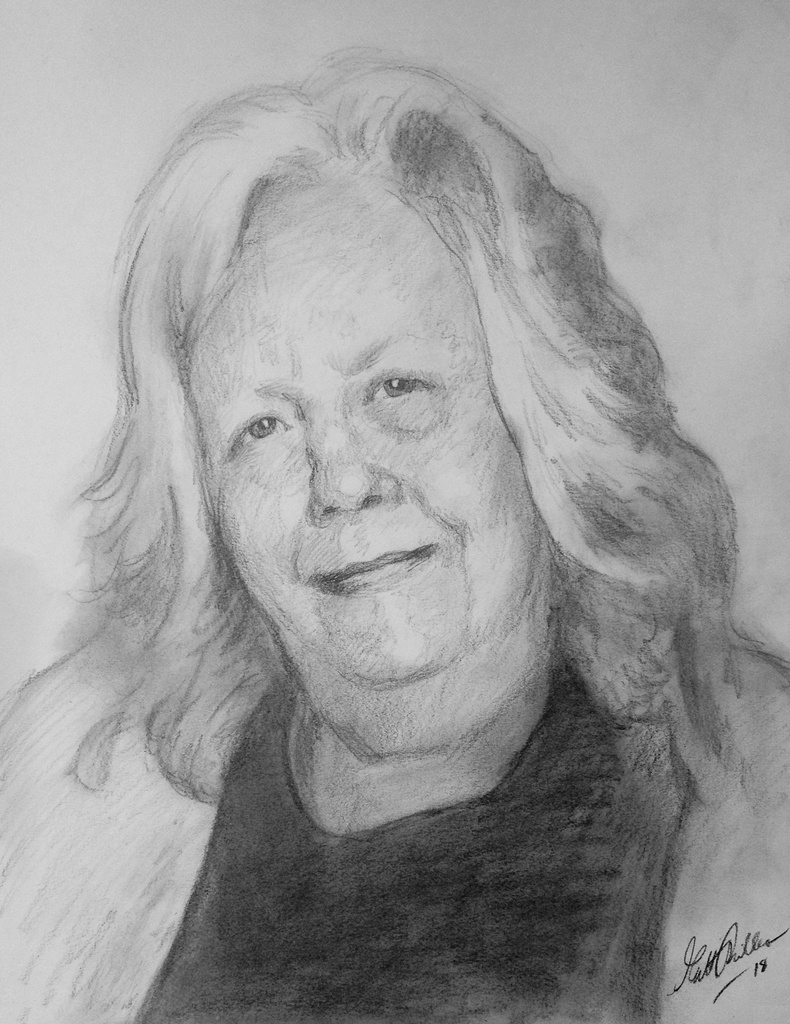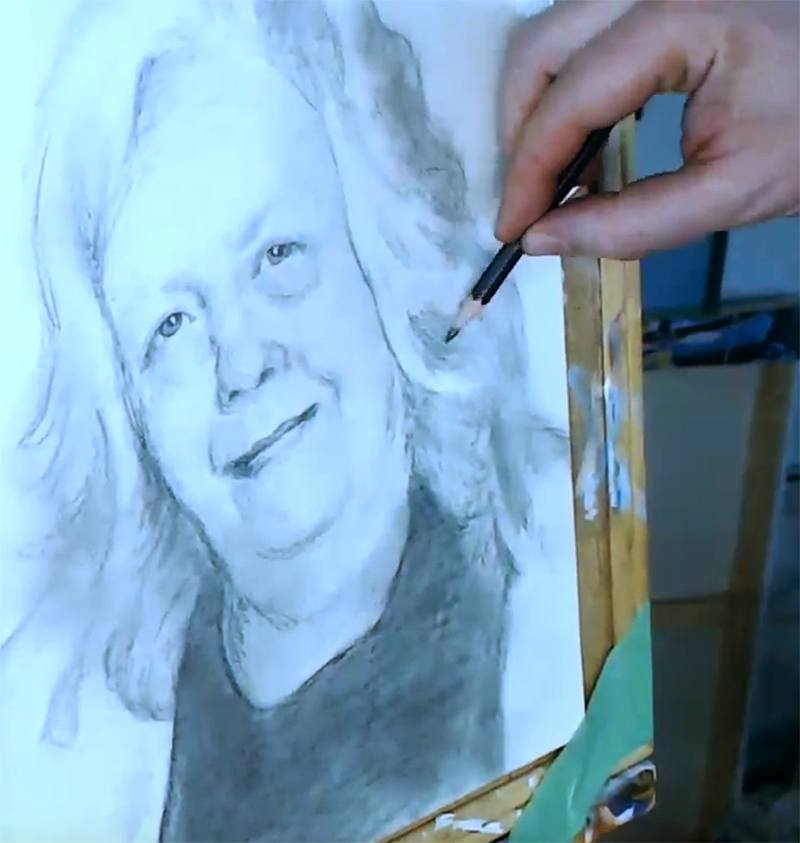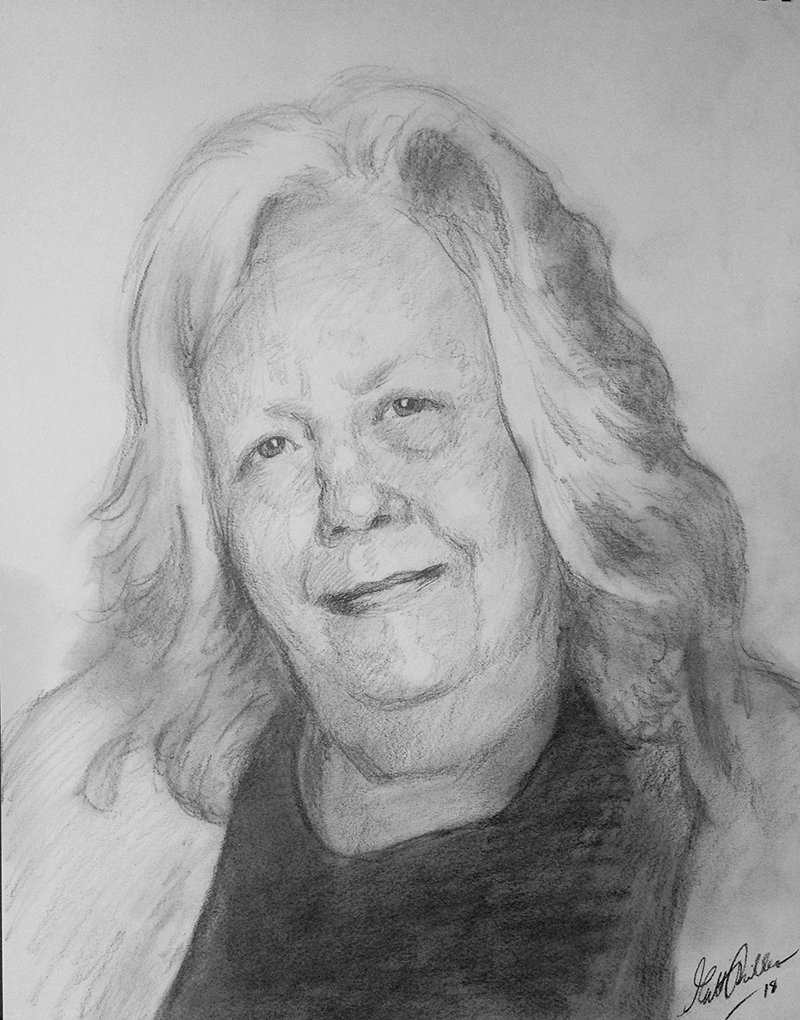- You are here:
- Home »
- Blog »
- Video Tutorial »
- How Freehand Sketching Can Improve Your Painting

How Freehand Sketching Can Improve Your Painting
What is the best way to get better as an acrylic portrait artist?
Is it by learning a new skin tone recipe? Is it by getting a new glazing medium? Or is it by watching a bunch of time-lapse videos?
All of these things can help, but what will get you the fastest results is to go to the foundation: accurate drawing. Most painters spent months or even years doing drawings before ever picking up a paintbrush. There’s just something about drawing that works wonders for your painting skills.
I think part of it is that it bypasses the other concerns of handling paint: mixing colors, brush technique, drying times, etc. You only have a few simple tools: your pencils, paper, and an eraser. And you work in monochromatic so it forces you to think only about your form and shading.

Portrait artist Matt Philleo sketching from a photo
So, why do I have a drawing tutorial here in Realistic Acrylic Portrait School? Because drawing is a fundamental skill, and it will drastically improve your painting. It won’t help to learn advanced skin tone and shading skills unless you know how to see three-dimensional forms and translate them to a two-dimensional surface. You want to be able to see the likeness of the person you’re trying to paint and accurately capture that. Drawing will do this for you faster than anything.
One of my neighbor’s friends’ sister died recently, and she asked me if I could draw a sketch of her to commemorate her. I agreed, and when I had some time in my crazy studio schedule, I got out my paper, and pencils and started sketching.
I set up the photo on my Kindle Fire, right next to my paper and started working. Now this drawing is definitely not fancy since it’s just a sketch done in under an hour, but I try to draw freehand often, to keep my skills sharp. I’m still learning, and trying to improve my skills.

Here is a a free training session showing how I drew the 11″ x 14″ pencil portrait, from start to finish, in about 45-50 minutes. In this video, you will learn:
- How to decide how big to make the face and get the initial proportions
- How to accurately position draw the shape of the features by working loosely at first and getting specific later
- Techniques for shading in the face to give it dimension
- Why it’s important not to blend too much
- And more!
Have a blessed day,

P.S. Did you find this post helpful or encouraging? If so, send it on ahead! Let others know with the share buttons below. I’d love to hear your comments. Thank you so much! Also, do you have a question on acrylic portrait painting you’d like answered? Let me know, and I’d be happy to help!
